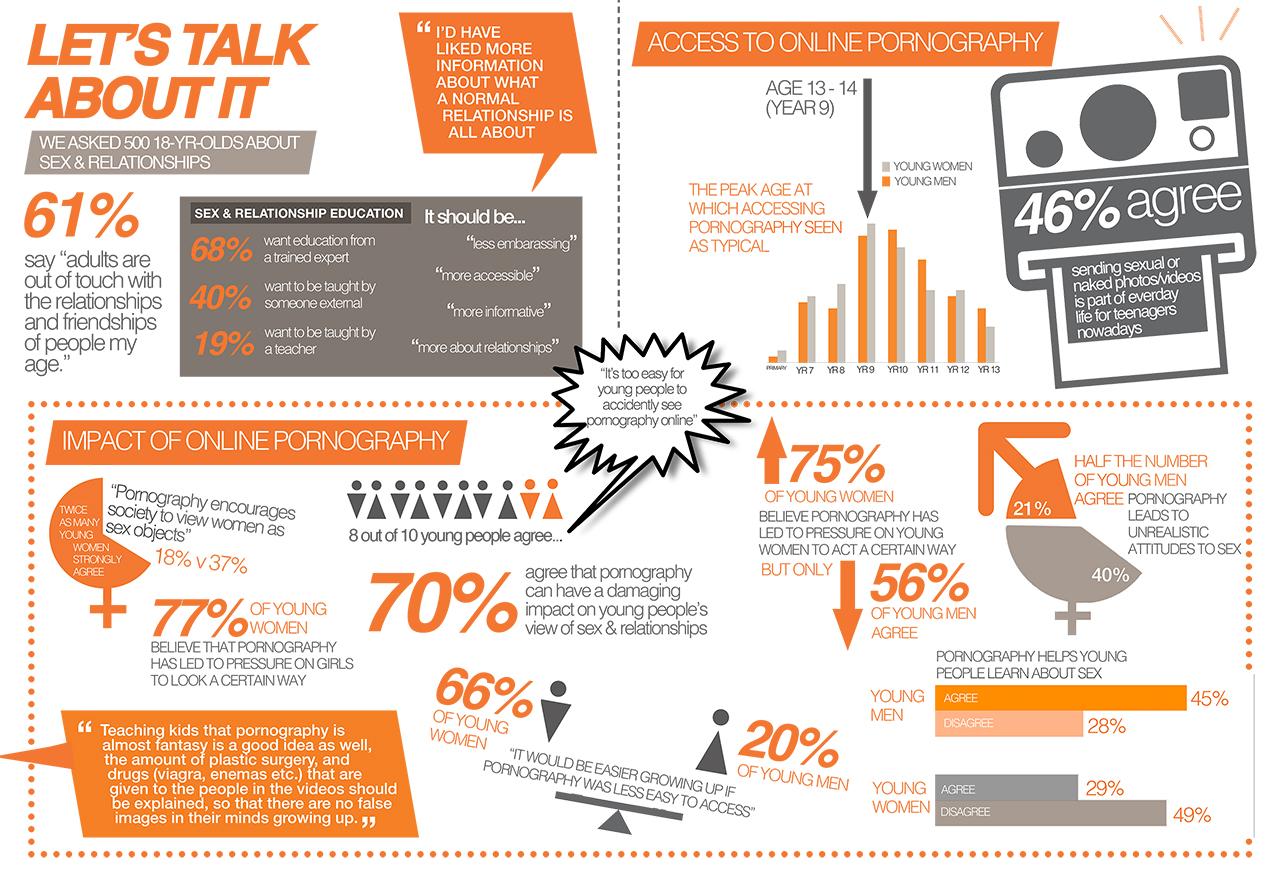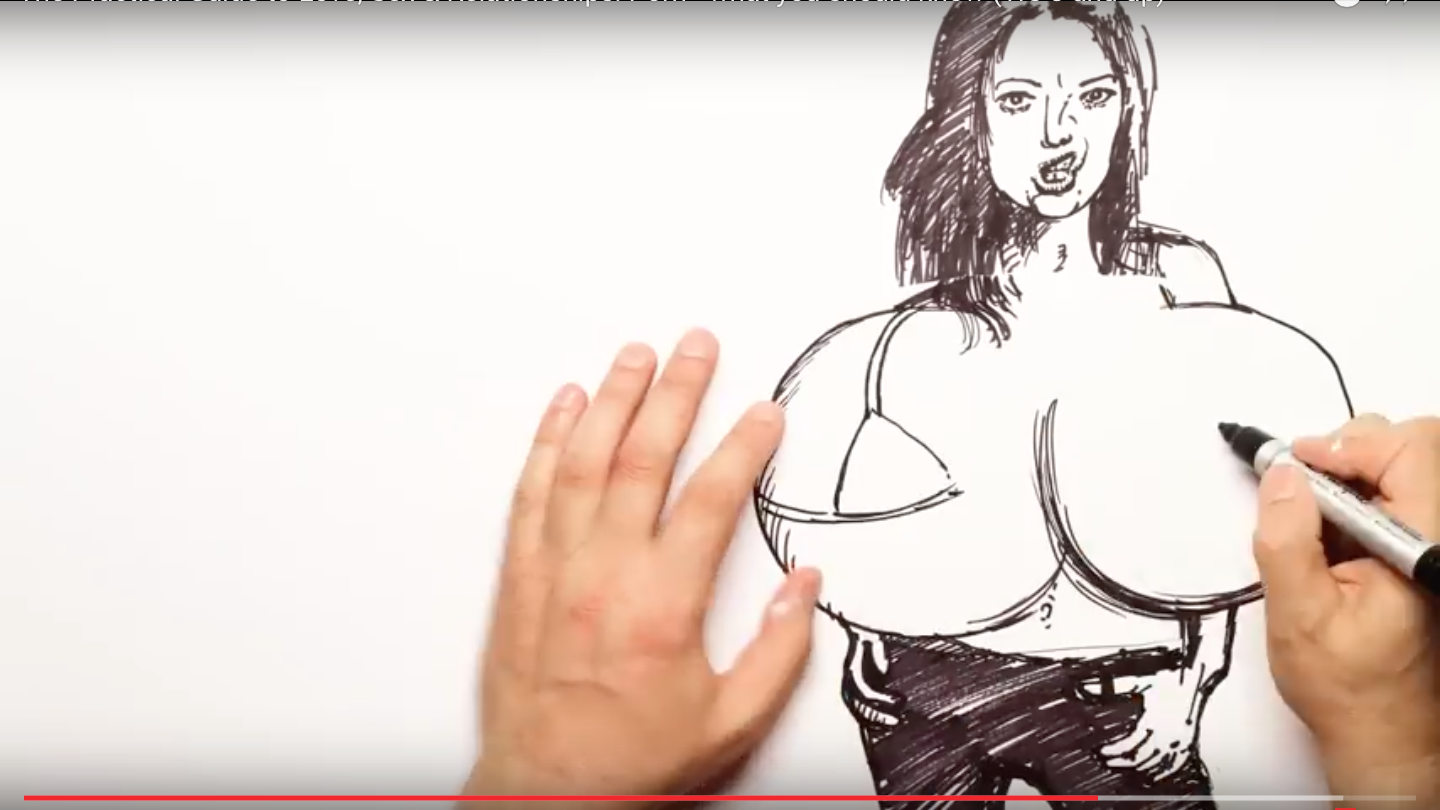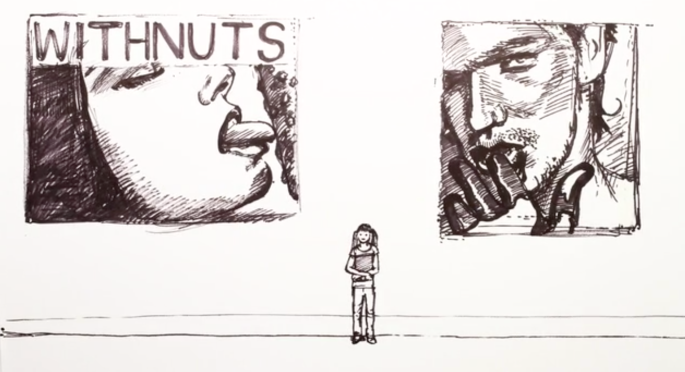Recently a symposium was held about a contemporary public health crisis that is potentially changing the way males and females relate to each other; it is a crisis of sexual relations, emotional connections, physical abuse and mental health. The premise of the symposium was that pornography is harming kids and teenagers to an extent that we have perhaps not yet realised the consequeces of.
Apart from being a public health crisis, this can also be seen as a visual culture crisis. Pornography exists in the visual realm; it is carefully constructed and scripted according to particular rules and expectations; it tends to use very specific body types, camera angles, “storylines”, sounds and words; and it is carefully marketed to make money. In this article I will explore why this is becoming such a problematic issue. In the second article (Part II) I will discuss how visual culture plays an important role in giving kids and teenagers the tools to make sense of pornography and other sexual imagery.
Kids Watching Internet Porn: The Facts
Pornography has been around in some form or another for thousands of years. However, only in the last decade or two has it become so readily available through the internet, so easy to access annonymously regardless of age, and in so many thousands of diverse clips where any type of sex thinkable can be seen.
The Cyber Violence Against Women and Girls Report released in 2015 by the UN Broadband Commission for Digital Development states:
” The growing ubiquity of mobile devices means those targeted or indirectly implicated are getting younger and younger — with children as young as 5 or 6 years of age now exposed to cyber bullying and online pornography — sometimes of the most extreme kind. In some contexts online culture represents the worst form of gang violence.”
On the Porn Harms Kids website a long list of worrying statistics show that children and young teens in large numbers are accessing pornography regularly. Many at an age of 10 or younger. Research is also showing that watching pornography is becoming normalised. Studies of pornographic scenes show that much of the content is violent with 88% contained physical aggression, 94% of it directed toward women; and in 95% of cases the victim was shown to respond either neutrally or with pleasure. The result is that minors who have been exposed to pornography generally have less progressive gender attitudes, are more likely to view women as sex objects, are more likely to be accepting of and engaging in sexual violence, and are more likely to be the victims of sexual violence. Furthermore, increased use of internet pornography has been shown to decrease the academic performance of boys.
The Problem for Boys
Internet pornography (as opposed to previous forms of porn) because of its potentially addictive qualities, its increasingly “hardcore” often aggressive content, and its frequent degradation of women, is having unforeseen and often detrimental consequences to the lives and relationships of men in particular. As this TED Talk by Gary Wilson explains, regular exposure to internet pornography literally changes the brain. He explains how the primordial male brain continuously looks for MORE and MORE virtual “mates” (through an unending variety of women on the screen), and for a continuous flow of novelty (meaning more and more hardcore and unusual forms of sex). This can lead to addictive behaviour that may cause problems relating to “real” mates, depression and ultimately erectile disfunction.
Gary Wilson calls it the “Great Porn Experiment” because we have no real idea what effects it will have on society when a large number of males are frequently watching pornography. Wilson speaks mainly of adult men, but one could speculate that the effects will be even more severe and difficult to navigate when prepubescents, pubescent kids and teens with developing brains are frequently exposed to online pornography. The images and belief systems about sex, bodies and performance will become hardwired at an early age. Increasingly psychologists and sexual educators are seeing a rise in abnormal sexual behaviour in children younger than 10, who are engaging in oral and anal sex acts after being exposed to pornography.
Many boys will have watched porn regularly for several years before they have even had their first kiss, let alone their first sexual encounter with a partner. This can lead to warped expectations of what sex should be like. Sexual educator Maree Crabbe explains that internet pornography popularises three main sexual acts: ejaculation on faces and bodies, fellatio with penis pushed into the throat inducing gagging, and heterosexual anal sex. She explains that because these three acts are continuously repeated, and porn actresses are instructed to make it look enjoyable, boys and men want to repeat them with their sexual partners. They often do not realise that girls and women mostly do not enjoy these acts, and in actuality gagging or anal sex may be painful to them, rather than being arousing. At a time when youngsters are just entering into sexual relationships, which in itself can be a daunting and confusing time, pornography can lead to a type of sexual encounter where mutual exploration can easily be overshadowed by a pre-scripted scenario of what sex should be. One where the male thinks he must perform specific acts in an aggressive way to please himself and his partner, and where the female likewise believes she must engage in these acts to be “good in bed”. Within such a dynamic intimacy, respect and honesty are qualities that can easily remain undeveloped. (See also Gonzo, Porn and Sexting – teenage boys, teenage girls and expectations. Should parents be worried?)
The Problem for Girls
Teenage girls are increasingly expressing their dismay at the pressure they are under from boys to engage in pornographic sex. They are suggesting that the romance has been removed from sex, and that boys often want to dominate in a culture where sex rather than being gentle, loving and fun, is increasingly becoming painful and brutal. As well as feeling pressured during sex, teenage girls are frequently pressured to send sexual images of themselves via their phones or tablets. In a UK study of 500 teens almost eight out of 10 young women said that “pornography has led to pressure on young women to look a certain way”, and almost as many young women said that “pornography has led to pressure on girls and young women to act a certain way”.
-

Infographic from the study of 500 18-year-olds in the UK by the Institute for Public Policy Research, 2014.
Most articles and studies on the subject have focused on boys and men watching pornography, and what it does to their expectations of sex. However, a large percentage of girls and young women have also been exposed to pornography, and though it is not spoken of, girls and women can also feel aroused by watching it. This can lead to confusion and shame, because the imagery is often degrading towards women. If one’s sexuality is not yet fully developed, it can be hard to understand that it is possible to become aroused by images, that one would not necessarily enjoy in reality. It also becomes difficult for girls and young women to express what does give them pleasure, which is often intimacy, soft and gentle touching, slow movements, and feelings of love and safety. When young women see that they are “supposed to” find the opposite arousing, it can lead to difficulty expressing their true desires.
Porn and Body Image
The effects of advertising on body image has been widely studied (click here for a list of studies on the effects on teens). Porn takes this to another level. Not only is the shape of the body scrutinised (the right size waist, thighs, breasts, facial proportions, skin colour, etc), but the most private parts are maximised on the screen. Generally there is a specific type of penis one is supposed to have (straight, circumcised and large), a specific type of vagina (waxed smooth, with small labia, akin to a child’s), for men broad muscular chest, for women small waist with large breasts and small nipples. Repeated viewing of these specific body types would have a worrying effect on pre-puberty, puberty, and teenage kids who’s bodies are in the middle of transformation. Hair is sprouting where pornography tells them it is not supposed to be. The labia is growing, perhaps becoming “too large”. The penis is changing, perhaps not becoming as large and straight as it “should be”. Breasts are growing, maybe unevenly, or not growing “large enough”.
The changing of the body in puberty and teenagehood has always been a complicated and anxiety ridden passage, but pornography is potentially exasperating these anxieties by prescribing set visual “rules” for the correct and incorrect body, not only with regards to its overall shape, but also in relation to the details of one’s genitalia. This will in the long run lead to increases in body dissatisfaction, and most likely increases in plastic surgery that “corrects” and mainstreams what is perceived to be abnormalities, but in reality are simply a true reflection of the normal diversity of the human body. This can already be seen in the rise of “designer vagina” surgery (a 49% rise in the United States from 2013 to 2014), which to a large extent is attributed to pornography, and to the fact that women do not see other women’s vaginas, therefore not knowing that diversity is normal (see also The Perfect Vagina). Similar trends can be seen in regards to penis surgery.
-

Screen shot from “The Practical Guide to Love, Sex and; Relationships: Porn – what you should know”, a resource developed by The Australian Research Centre in Sex, Health and Society, 2016.
-

Screen shot from “The Practical Guide to Love, Sex & Relationships: Porn – what you should know”, a resource developed by The Australian Research Centre in Sex, Health and Society, 2016.
In an age where many kids, teens, and adults are increasingly overweight, and where body dissatisfaction is increasingly becoming a problem for children and teens, porn actresses (and actors) show body shapes that are far removed from the reality of many youngsters. Slim women generally tend to have smaller breasts, while rounder women usually have larger breasts (as breasts are made of fatty tissue). However, in the realm of porn most women seem to be both slim and have large breasts, a body shape that is often fabricated through plastic surgery. Research shows porn actresses to have a similar BMI and body shape to that of supermodels and shop mannequins. Frequent exposure to porn will inevitably cause young women and men who do not have these desired body shapes to feel that their bodies cannot possibly be sexy, resulting in increased uneasiness and shame in a sexual situation.
-

Typical porn bodies. Here porn stars Sandee Westgate and Jared Grey.
Another aspect of internet pornography that we perhaps do not yet fully understand the consequences of is a tendency to show young looking girls. Even though the actresses may be 18 or over, there is a whole genre of “hot teen slut” porn, where the girls look like very young teens, sometimes dressed in school uniforms. Coupled with the general absence of pubic hair and large labia in pornography this could potentially lead boys and men to become attracted to younger and younger females.
Apart from the above mentioned issues relating to body image, there would be added anxieties and feelings of inadequacy for those of different ethnic backgrounds than those predominantly depicted in porn, for those with developmental or physical disabilities or bodies that do not conform to the “norm”, and for those kids and teenagers who are lesbian, gay, bisexual or transgender (of course there are whole other potentially problematic porn industries that cater for LGBT people).
Why a “Visual Culture” Crisis?
The field of visual culture is the study and critque of images (still or moving) that we encounter in our everyday lives; from high art, to popular culture, and anything inbetween. Pornography is a facet of visual cuture, and with its growing influence on society, it elicits the attention of those engaged in the critical analysis of visual representations. The emerging crisis is increasingly being recognised within the fields of public health, education and psychology. Those who study images also have an important role to play in furthering an understanding of the difficulties and solutions surrounding a problematic porn culture.
Pornography is a billion dollar industry, with films that are carefully constructed. Just as advertising plays on very specific emotional resposes to the imagery it portrays, pornography is produced to elicit repeated emotional reactions. When the same imagery is repeated enough times it becomes normalised, and over time images that deviate from this norm will be seen as abnormal. The archetypes continuously reproduced in porn are often mirrored in advertising, music videos, films, magazines, television and the media. Scholars and commentators accustomed to examining these types of media from the fields of visual culture, marketing, graphic design, photography and art history have wisdom, experience and unique perspectives that can be useful in analysing the culture of pornography.
The Age of Porn
The sexual liberation movement of the 1960s changed western sexuality to one of more freedom — in many ways it was a movement towards women’s sexual liberation. New forms of contraception gave women more right to choose, and more freedom to express themselves sexually. The utopian message of the movement was “free love”. This movement towards a relaxed attitude to sexuality was of course not without its own problems, and as happens when something swings to one extreme, it swings back again. Following the complexities associated with free-flowing family structures, and the onset of the HIV/AIDS epidemic, a somewhat more conservative approach to sexual partnership has again become the norm.
In contemporary culture one could argue that rather than a movement towards free love, as seen in the sexual liberation movement that began in the 1960s, the current movement is influenced by a restriction of roles defining what men and women should find pleasureable and what they should look like. Paradoxically amidst an ever growing cultural diversity, the normalisation of mainstream pornography is a movement towards the normalisation of unequal power structures. A culture where women and girls may end up pretending to enjoy things they often do not, and where men and boys may feel like they must engage in certain practices to be “a real man”. On the surface it seems that liberation has taken place, that the choices have been opened right up, so that one can have any kind of sex imaginable. However, if sex is being taught to a new generation according to a pornography script, there is not much room for real diversity. Love, respect and tenderness are not facets of pornography, and if unchecked could diminish from young people’s understanding of what sex could and should be.
I am not advocating bans and restrictions on pornography; this would be unrealistic and ultimately ineffective. Pornography has its place as a tool for exploration, and for release, and is a much more complex issue than can be explored in this article (see for example Gonzo: we need to talk about young men and porn). Nevertheless, whereas a 12-year-old child 30 years ago might have found her/his dad’s porn mag in the sock drawer, today’s 12-year-olds have access to tens of thousands of films, some with very disturbing content, at the click of a button. To help him/her navigate this never-ending supply of stimulation, open and non-judgemental dialogues need to be in place within our cultural framework. A great deal can be done to educate kids, teens (and adults) to engage critically with pornography, and to ensure that the other aspects of respectful and loving sexual relationships are learned. This is what will be discussed in Part II.

